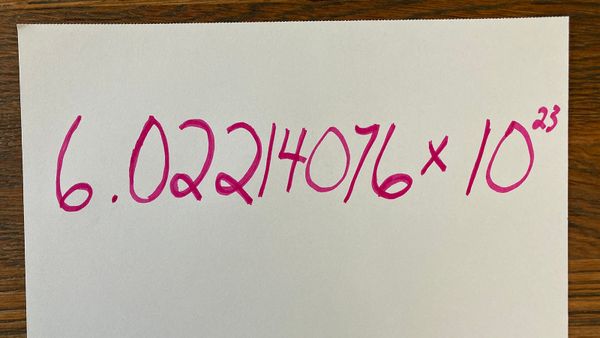The number's size will blow your mind. Remember when we said that a Googol is 10100? Well get this: Astronomers estimate that there are only 1078 to 1082 atoms in the known, observable universe — an area which encompasses 93 billion light years.
Enormous as a Googol is, at least you can write it down numerically. By this, we mean to say that you could — if you felt so inclined — write a 1 followed by 100 zeroes. The same cannot be said of a Googolplex. That, dear reader, is a one followed by a Googol's worth of zeroes. No matter how tiny your handwriting is, you'll never be able to jot down all those 0s; there are more zeroes in a Googolplex than there are atoms in the observable universe. The only way to commit this figure to paper is by using exponential notation. Written out that way, a Googolplex is:
1010100 (or 10 to the 10th to the 100th)
And if you think a Googolplex is big, get a load of Skewes' number, which looks like so:
10101034 (or 10 to the 10th to the 10th to the 34th)
This one derives its name from Stanley Skewes, a South African mathematician with an interest in prime numbers. You probably know that a prime is any number that can only be divided by itself and by the number one. Therefore, three is a prime, but four is not because it's divisible by two. To make a long story short, Skewes was studying a mathematical function that's been used to give rough estimates of how many primes there are between zero and any number you might care to name (eg: 1,000).
Skewes introduced his eponymous number to the world in a 1933 paper on said function. In the words of one colleague, this was — at the time, at least — the "largest number which has ever served any definite purpose in mathematics."
It's since lost that distinction to still-bigger sums like "Graham's number" and the monstrous TREE(3). Both of these are way too vast for the human mind to grasp. Yet each is finite and mathematically useful in its own way.
Before wrapping up this discussion, let's take a step back to acknowledge a smaller figure. In January, 2018, math enthusiast Jonathan Pace identified what is, to date, the biggest known prime number. Named M77232917, it contains more than 23 million digits — 23,249,425 of them to be exact. As such, it is 910,807 digits larger than the previous record-holder. To be sure, M77232917 isn't in the same league as the Googolplex or Skewes' number. But if you wrote the newfound number out in its entirety at a rate of five digits per inch, the whole thing would exceed 73 miles (118 kilometers) in length. Sounds like a surefire way to get finger cramps.


